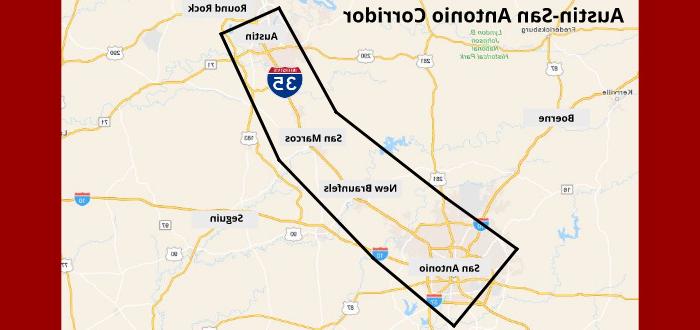Austin-San Antonio Corridor Vs. the Recession
June 6, 2022

Can San Antonio skate by the on-coming Recession?
Retail sales are declining. U.S. home sales are down 16% in April alone, the fifth straight month of declines. The stock market has fallen apart with interest rates edging higher and higher. Inflation may be peaking, but will likely remain high for some time to come. Gross Domestic Product (GDP) for Quarter 1 of 2022 was negative, and Quarter 2 will probably be as well.
This is the definition of a Recession, but is San Antonio and commercial real estate strong enough to muscle through?
Just how strong is San Antonio?
Well, the San Antonio Express News reported that our jobless rate fell to 3.3% in April, below state and national numbers, and the lowest since pre-Covid in February 2020. Moreover, “San Antonio payrolls expanded an annualized 2.9 percent (7,718 jobs) over the three months ending in April”, according to the Dallas Federal Reserve.
The Austin-San Antonio Corridor MSA
Now, how about our little neck of the woods, the Austin-San Antonio Corridor?
We can measure the gross output of goods and services of a metropolitan area, like the San Antonio-New Braunfels MSA and the Austin-San Marcos MSA. San Antonio’s MSA produced a Gross Metropolitan Product (GMP) in 2020 of $132-billion. Eight years ago, back in 2012, San Antonio’s GMP was $92-billion, so we have boomed 43% in under 10 years.
“Hold my beer!” says Austin, who turned in at $168-billion in 2020, versus $100-billion in 2012! A whopping 68% increase is not bad! (Note to Alamo City readers: Austin is ahead and pulling away, moving from a $7-billion spread to a current $36-billion lead.)
Economic Indicator
Another important indicator of a city’s health is airport traffic, which includes a lot of business travelers now that Covid’s influence is mostly subsided. The San Antonio Business Journal reports that SA International hit 1.94 million passengers in Quarter 1, which is still about 18% below our pre-covid 2019 numbers, however, Austin Bergstrom clocked in with 4.1-million passengers in the first quarter, well over their 3.7-million Q1 2019 number. That is sensational!
Austin-San Antonio Corridor
Please allow me to ask you to stretch your imagination a moment. Visualize the Austin-San Antonio Corridor as one big metropolitan area, stretching from Georgetown to San Antonio, and all the smaller cities in between. Now, can we compare this to DFW, with Dallas being Austin, San Antonio being Ft. Worth, then Irving and Arlington being San Marcos and New Braunfels? This would catapult San Antonio from # 32 nationally to #12 and enhance the value of our commercial real estate as a Top Tier Metro, while being, yet, slightly more than half the size of DFW and Houston.
Speaking of New Braunfels, Guadalupe County ranked No.1 in the whole U.S. of A. in fastest growing medium sized counties with a GMP of 5.9%!
Real Estate
Real estate is doing well, too.
While home prices are appreciating quickly, home availability within the San Antonio metro is remaining relatively affordable to the median-income household. Overall, homes sold within this price range rose about 5% in Q4 of 2021 from 34.3% to 39.2% in Q1 of 2022.
Alamo City added the most new residents in the past year, when compared to other cities of more than 50.000 residents. Increasing by 13,626 new residents between July 1, 2020 and June 30, 2021, surpassing Phoenix who only increased by 13,244 new residents during that same period. Data released by the Census Bureau states that the current population of San Antonio is now nearly 1.5 million people.
Meanwhile, San Antonio is not the only place surging in population growth. New Braunfels, Guadalupe County ranked No.1 in the whole U.S. of A. for fastest growing medium sized counties with a GMP of 5.9%!
With all that San Antonio and the Austin-San Antonio Corridor have going for them (in regards to real estate, population and job growth, along with a sturdy GMP) maybe that recession won’t come a’knocking here.

